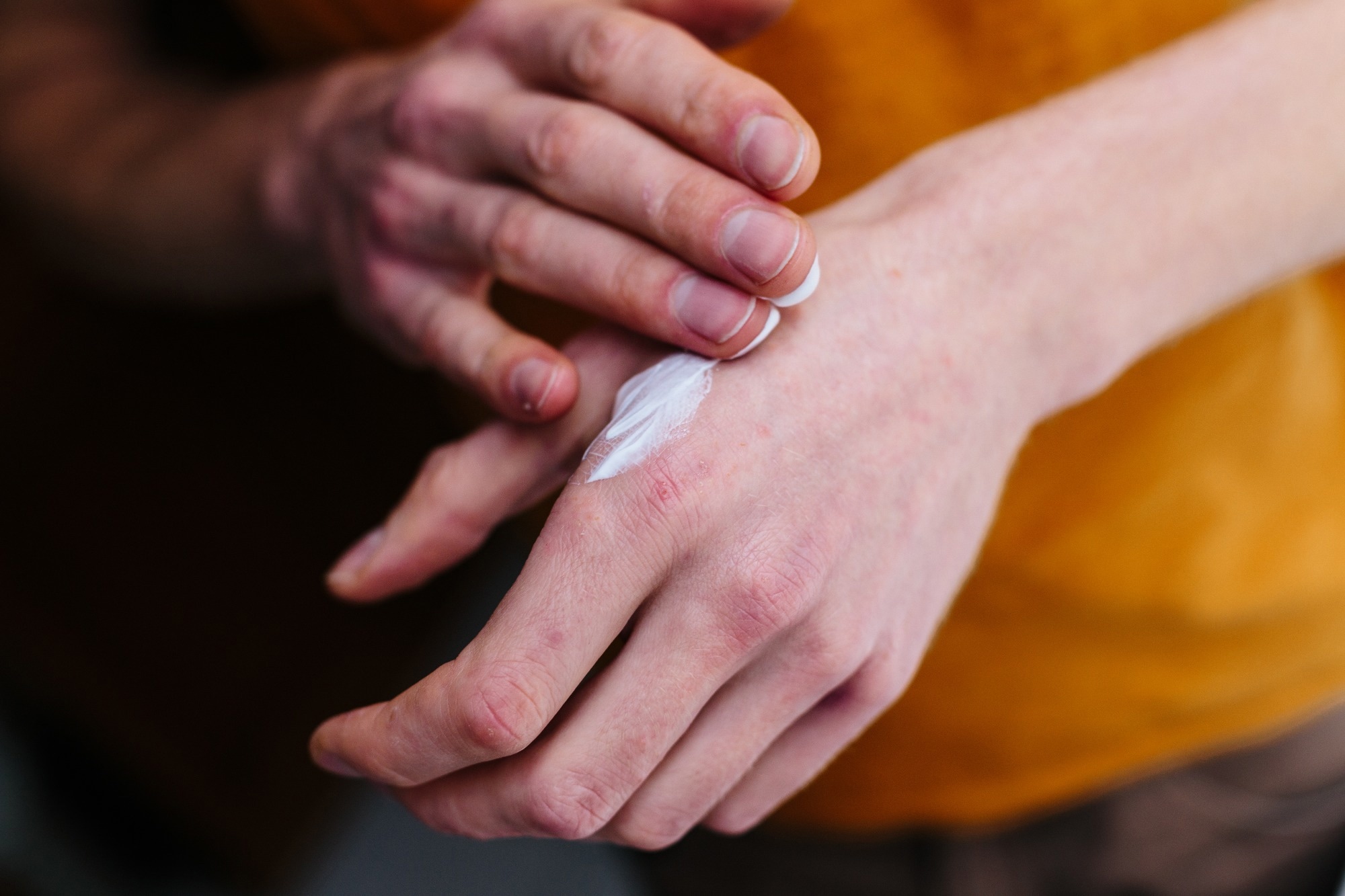Additionally, the study investigated whether eczema in early life could modify the association between breastfeeding and allergies.
 Study: Full Breastfeeding and Allergic Diseases—Long-Term Protection or Rebound Effects? Image Credit: TernavskaiaOlgaAlibec/Shutterstock.com
Study: Full Breastfeeding and Allergic Diseases—Long-Term Protection or Rebound Effects? Image Credit: TernavskaiaOlgaAlibec/Shutterstock.com
Background
German dietary and allergy prevention guidelines advocate exclusive breastfeeding during the initial six months of life, based on breastfeeding's benefits on maternal and infantile health.
Existing evidence on allergy prevention by breastfeeding during early childhood is not conclusive. The GINIplus trial findings demonstrated that human milk feeding could prevent early eczema.
However, the effects were attenuated during adolescence, indicative of a rebound among breastfed individuals following initial immune protection.
About the study
In the present study, researchers investigated whether eczema in early life could determine the course of allergic infections until early adulthood and whether eczema could alter the relationship between breastfeeding and atopic disease development in the long run.
Data from 4,058 GINIplus study participants from birth until 20.0 years of life were analyzed. Data on rhinitis, asthma, and atopic eczema were based on the diagnoses reported by physicians. The present study outcomes were the period prevalence rates of allergic rhinitis (AR) or hay fever, asthma, and eczema and their cumulative incidences until 20.0 years of life.
Eczema in early life was described based on physician-reported eczema diagnoses in the initial three years, as documented by their mothers and fathers in the survey questionnaires.
Breastfeeding data were obtained from weekly-updated diaries. Infants were considered fully breastfed if they received human milk during the first four months of life. Positive responses to physician diagnoses during the study period and management in the previous year were analyzed. This allowed the study to calculate the period prevalence, and those during a child's lifetime were used to calculate the cumulative incidence.
Logistic regression modelling was performed to calculate the adjusted odds ratios (aORs) and estimate the period prevalence. Generalized estimating equations (GEE) estimated the cumulative incidence, and the results were expressed as relative risk (RR) values.
For the GINIplus trial, the researchers recruited 5,991 full-term infants from 16 wards in the Wesel (rural) and Munich (urban) regions of Germany from September 1995 to June 1998 to form the intervention (I) and non-intervention (NI) study groups. Mothers with chronic diseases such as human immunodeficiency virus (HIV) infections, diabetes, and autoimmune diseases were excluded.
Only newborns with an increased allergy risk based on a positive history of allergies in first-degree relatives (FH+) with ≥1.0 parents or biological siblings who had suffered from allergies were included. The I cohort infants received extensively hydrolyzed whey (eHF-W), partially hydrolyzed whey (pHF-W), extensively hydrolyzed casein (eHF-C), or cow milk formula (CMF). FH- infants or those lacking parental consent for participation in the interventional study comprised the NI group.
Results
Of the 2,252 infants in the intervention group, eczema data for the initial three years was available for 1,661 infants. The NI group comprised 2,397 infants, among whom 40 were excluded due to inadequate data.
A higher prevalence of early-life eczema was observed among high-risk children. The prevalence rates were identical among FH+ children in both the I (27%, n=453) and NI groups (26%, n=207), whereas the FH- NI group infants developed early eczema less frequently (15%, n=240).
Among I, NI FH+, and NI FH- cohorts, 44%, 51%, and 48% of participants were exclusively breastfed for four months, respectively. In addition, the I group had fewer siblings and more educated parents.
Early-life eczema was related to eczema (aORs ranging between 3.20 and 14), asthma (aORs ranging between 2.20 and 2.70), and allergic rhinitis (aORs ranging between 1.20 and 2.7) in initial adulthood; however, the association reduced with advancing age for eczema.
Longitudinal modelling showed a non-significant association between breastfeeding and allergic conditions from five to 20.0 years of life. In addition, early eczema did not significantly alter the relationship between breastfeeding and the development of allergies, with the exception of AR in individuals with a negative family history of atopy.
Early eczema was accompanied by a higher eczema period prevalence until initial adulthood. In addition, allergic rhinitis and asthma prevalence were persistently higher among infants with early eczema than those without.
The finding was observed among I and NI group participants, irrespective of their FH status, confirmed by statistical analysis since early eczema not only significantly predicted the prevalence of eczema through young adulthood but also of allergic rhinitis and asthma.
GEE modelling confirmed that the aOR values for early eczema reduced with age among the I and NI groups' FH- participants. In contrast, the effect for allergic rhinitis and asthma did not change with time across groups.
The risk-lowering impact of human milk feeding on eczema compared to CMF among I group participants was reduced after early immune protection and was non-significant considering the cumulative-type incidence rate over 20.0 years of life.
On the contrary, high-risk eHF-C-fed infants in the group constantly had even lower eczema risks than breastfed infants through young adulthood.
However, among NI participants, exclusive breastfeeding did not lower the cumulative incidence rates of any atopic outcomes compared to non-exclusive breastfeeding. The period prevalence modelling from five to 20.0 years of age did not show the effects of breastfeeding on any study outcome.
The analyses did not show a significant modifying effect of early eczema on breastmilk feeding on the development of allergic rhinitis, eczema, or asthma among FH+ children.
Conclusion
Overall, the study findings showed that the preventive effects of breastfeeding seemed to reduce with age, at least among pediatric individuals with a history of allergies in the family.
However, no rebound effects were observed among exclusively breastfed children with no history of early-life eczema or later-life allergies. The GINIplus study data confirmed that breastfeeding must be advocated to prevent allergies, at least for protective effects during early life.
Further research is required to evaluate long-term immune protection against allergic rhinitis among children with low familial risks for allergies.